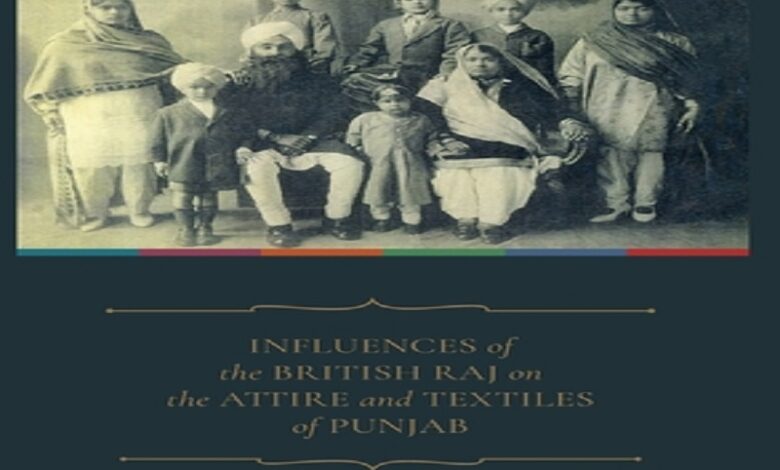Book explores western influence on Punjab fashion
A new coffee table book explores in meticulous photographic detail how Indian, especially Punjabi, attire was transformed by western influence from the mid-19th century to pre-Independence 20th century and then on.
The lavishly displayed “Influences of the British Raj on the Attire and Textiles of Punjab”, written by author-textile researcher Jasvinder Kaur, edited by Nirad Grover and designed by Nikheel Aphale, traces simpler times in Punjab when western clothes were gaining currency among the men and women of the province – even when the British did not appreciate the idea.
“The British imposed some rules on dressing in order to emphasize the difference between the new rulers of India, i.e., themselves, and the ruled, i.e., the natives. Even the Indian royalty was subjected to these policies. They could not wear anything that would in any way resemble the English crown,” the author says in the book.
Be that as it were, the popularisation of new fabrics and changes in attire did take place, and it was across the board, she notes in the introduction. Men took fancy to wearing not only a fully western outfit, but also combinations of European and Indian apparel.
In the early 19th century, just as the East India Company and the British Empire with it was gradually spreading its control over the subcontinent, the man from Punjab wore a kurta, pyjama, juti and the indispensable pagri (turban).
Soon, the common western-style coats, waistcoats, greatcoats and overcoats found themselves mixed and matched with Indian clothes. The fusion of European and Indian also gave birth to the achkan and sherwani that incorporated elements of both the fashion styles.
Under western influence, men’s clothes became slimmer and well-fitted. The achkan was a fitted garment like the English coat, from which it took many elements.
“Women’s clothes were impacted to a lesser degree, but changes came in the style of wearing a sari, the introduction of the blouse and the petticoat, and the use of cosmetics and accessories,” Jaswinder Kaur writes.
The 160-page book is divided into five parts – Men’s Clothing, Women’s Clothing, Accessories, Materials, Acquiring Goods, Embroidery and Handwork – tracking the changes through the years with words and photographs.
Accompanied by photographs of Punjabi men and women, royalty and commoners, the book paints a vivid picture of the times that were.
With the increasing western influence, Indian men started wearing different clothes at different times of the day, a practice alien to Indian lifestyle thus far.
“At times, Indian men wore only Indian attire during the day, while in the evening, they changed into full western dress. Keeping a handkerchief became common, and some gentlemen even started carrying a cane, as was the practice in the west,” says Jaswinder Kaur.
Trousers, she adds, were perhaps the last element of western attire that was adopted by Indian men.“And, there was a reason for it.”
The author, who grew up in Punjab, learnt from her grandmother that at one time Indian homes held very little furniture, as the rooms of the house were meant for ‘mixed-use’: sitting, eating, sleeping and the like.
“As long as people used the floor for sitting, they continued to wear pyjamas because that made it easier to sit. But when elevated furniture entered peoples’ homes, so did trousers.” While men’s clothing saw an almost complete makeover under the Raj, Jaswinder Kaur points out that the traditional dress of Indian women did not undergo drastic changes. To a large extent, it has not happened even now.
“Women’s clothes were impacted to a lesser degree, but changes came in the style of wearing a sari, the introduction of the blouse and the petticoat, and the use of cosmetics and accessories.”
While men, even in rural Punjab, wear jeans, tee shirts today, women continue to wear the traditional Punjabi dress: salwar and kameez with dupatta.
The author says women of Punjab practiced ‘purdah’ and therefore had “limited interaction with the outside world, played a part in restricting them, as compared to men, from being influenced by the British way of dressing”.
The book also tracks the introduction of western clothing accessories such as shoes, socks, purses, and watches into Indian men and women’s attire, as well as the entry of English fabric like lace, net, and velvet among others.
“When English cloth appeared in Indian markets, it was attractive not just for the variety of colours and designs it offered but also it offered the convenience of obtaining ready-made cloth,” Jaswinder Kaur writes.
Published by Rupa Publications, the book is available to buy from online and offline stores at Rs 2,500.
Source : PTI







